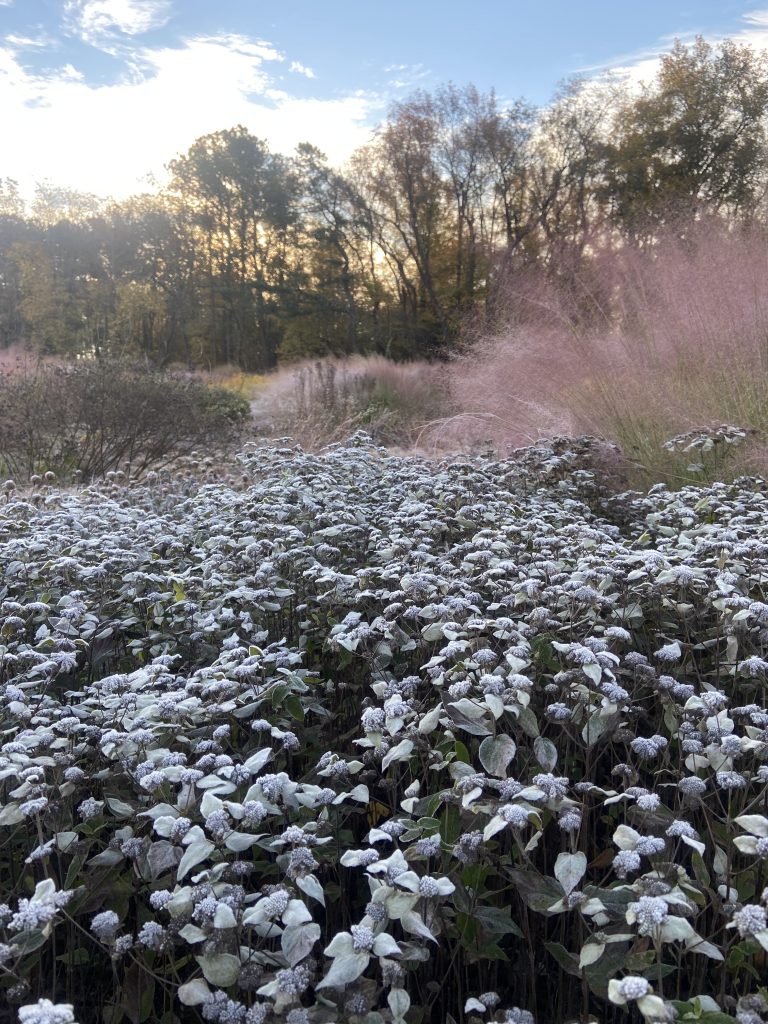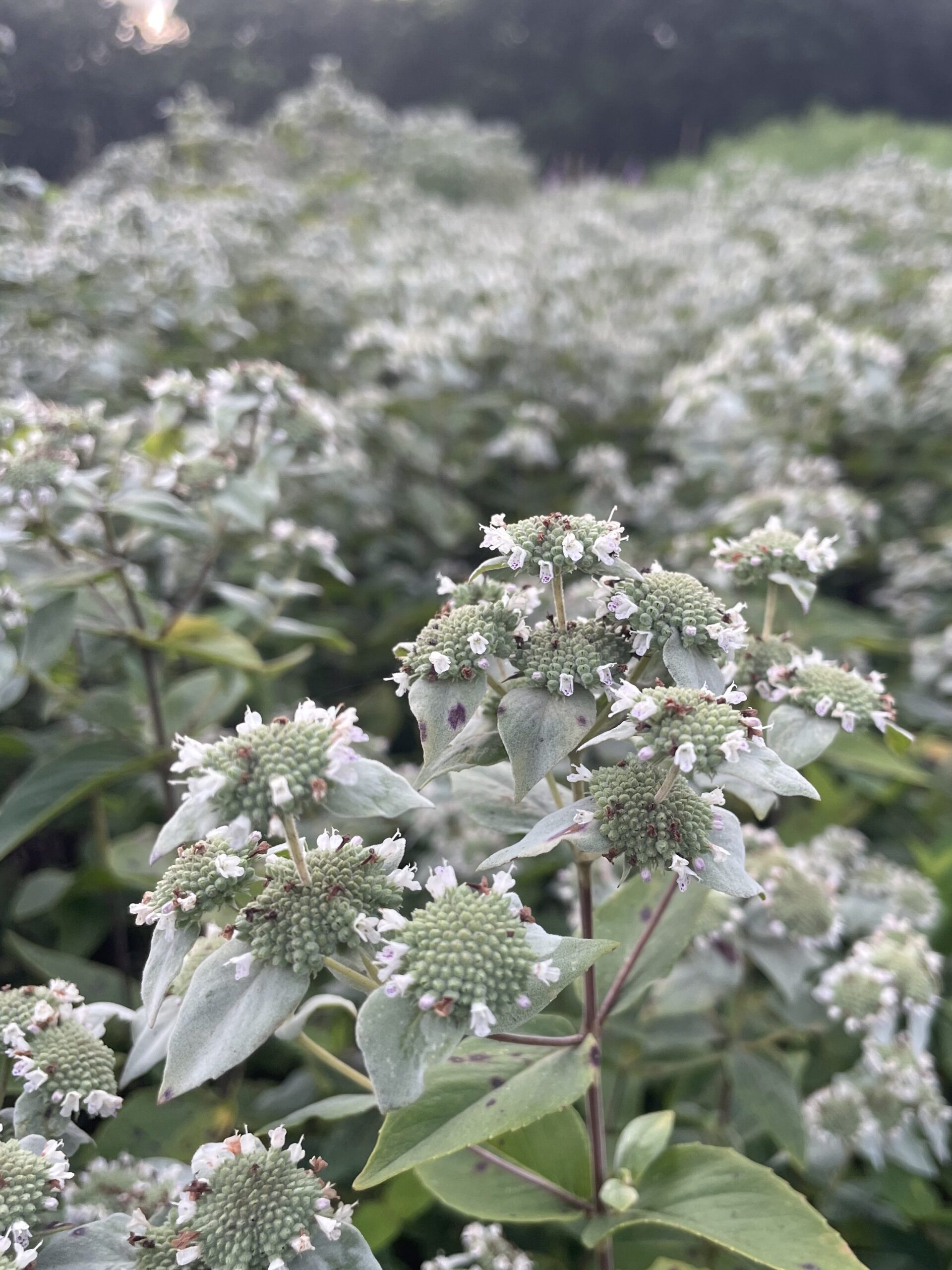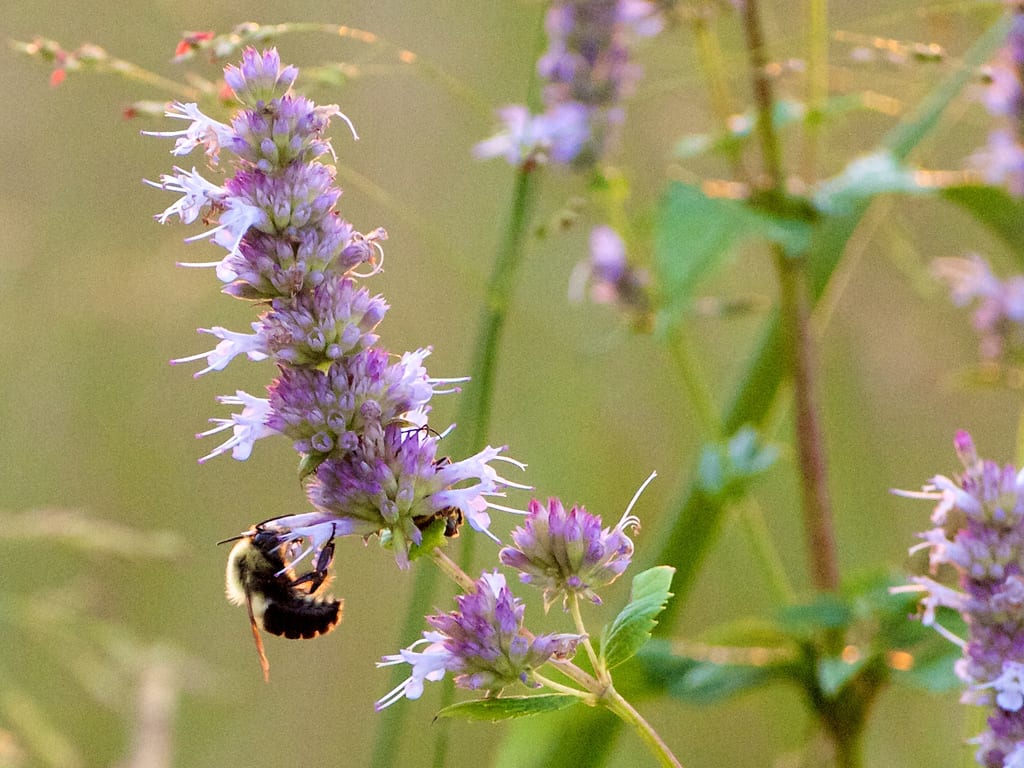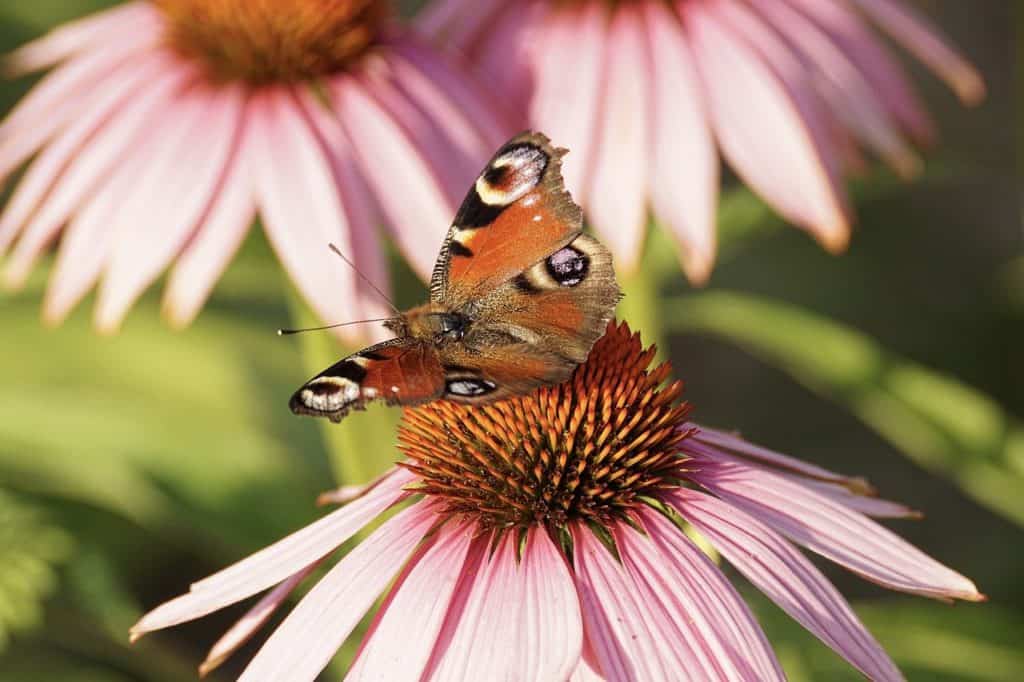Native Plant Profile: Pycanthemum muticum – Clustered Mountain Mint
Pycanthemum muticum, commonly known as clustered mountain mint, has garnered much attention for its remarkable pollinator-attracting abilities and its recent recognition as the Perennial Plant Association’s Perennial Plant of the Year for 2025. This exceptional plant, featured prominently in the Piet Oudolf Meadow at the Delaware Botanic Gardens, offers a myriad of benefits that make it a must-have in any wildflower meadow.
In my own natural garden, the allure of clustered mountain mint is in every corner of my garden, tolerating dry shade under the red maples, thriving in the full-sun amongst coneflowers, and golden-rod. Butterflies of all shapes, and sizes, dragonflies, hoverflies and various bees are all visiting, and feeding from my mountain mint at home.
Check out these award winning attributes:
1. Diverse Pollinator Attraction
Clustered mountain mint is renowned for attracting a wide array of pollinators, including bees, butterflies, and beneficial wasps. Its tiny white flowers, which bloom profusely throughout the summer, provide an abundant source of nectar, making it a magnet for these important garden visitors. The presence of such a diverse range of pollinators not only enhances the ecological balance of your garden but also ensures the health and productivity of other flowering plants nearby.
2. Silver Leaves in Summer
One of the standout features of Pycanthemum muticum is its striking silver-tinged leaves. These leaves, which maintain their silvery hue throughout the summer, add a touch of elegance and visual interest to the garden. Their unique appearance creates a beautiful contrast with the vibrant green foliage of other plants, making clustered mountain mint a visually appealing choice for any wildflower meadow.
3. Abundant Tiny White Flowers
The small, white flowers of clustered mountain mint are not only attractive to pollinators but also to garden enthusiasts. These flowers, which appear in dense clusters, create a stunning display that enhances the overall aesthetic of the meadow. Their subtle yet captivating beauty makes them a popular sight for visitors to the Piet Oudolf Meadow at the Delaware Botanic Gardens.



Some practical benefits of growing clustered mountain mint
1. Mosquito-Repelling Properties
In addition to its visual and ecological benefits, Pycanthemum muticum is also known for its mosquito-repelling properties. The plant contains natural compounds that deter mosquitoes, making it a practical addition to any garden. This quality makes it an excellent choice for those looking to enjoy their outdoor spaces without the nuisance of mosquito bites.
2. Easy to Grow and Maintain
Clustered mountain mint is an easy-to-grow perennial that thrives in a variety of soil types and conditions. It is drought-tolerant and can withstand periods of neglect, making it an ideal choice for both novice and experienced gardeners. Its resilience and low maintenance requirements mean you can enjoy its many benefits without a significant investment of time and effort.
3. Enhancing Biodiversity
By incorporating clustered mountain mint into your wildflower meadow, you contribute to enhancing the biodiversity of your garden. The plant provides habitat and food for a wide range of pollinators and other beneficial insects, promoting a healthy and balanced ecosystem. This increased biodiversity can lead to improved soil health, better pest control, and a more resilient garden overall.
A Compelling Reason to Grow Clustered Mountain Mint
The recognition of Pycanthemum muticum as the Perennial Plant of the Year for 2025 by the Perennial Plant Association underscores its exceptional qualities and benefits. Whether you’re looking to attract a diverse range of pollinators, add visual interest to your garden, repel mosquitoes, or enhance biodiversity, clustered mountain mint is a compelling choice. Its easy-to-grow nature and myriad benefits make it a standout addition to any wildflower meadow, ensuring that your garden not only thrives but also supports the broader ecological community.

For those inspired by the beauty and functionality of the Piet Oudolf Meadow at the Delaware Botanic Gardens, Pycanthemum muticum offers an opportunity to bring a piece of that award-winning landscape into your own garden. Embrace the power of this remarkable plant and experience the many rewards it has to offer.

Native Plant Profile: Pycanthemum muticum
– Common Name: Short-toothed Mountain Mint
– Scientific Name: Pycanthemum muticum
– Plant Family: Lamiaceae (Mint family)
– Native Range: Eastern and central North America
Care Instructions:
1. Sunlight: Short-toothed Mountain Mint prefers full sun to partial shade, ideally receiving at least six hours of direct sunlight per day.
2. Soil: It thrives in moist, well-draining soil. However, it can tolerate a variety of soil types, including clay and sandy soils.
3. Watering: Water the plant regularly, especially during dry spells, to keep the soil consistently moist but not waterlogged.
4. Pruning: Trim back the plant in early spring to encourage bushier growth and remove any dead or damaged stems.
5. Fertilization: Generally, Short-toothed Mountain Mint doesn’t require much fertilizer. However, you can apply a balanced, slow-release fertilizer in spring if needed.
6. Propagation: It can be propagated by division or through seeds. Division is best done in spring or early fall.
Companion Native Plants:
1. Echinacea purpurea (Purple Coneflower)
2. Monarda didyma (Bee Balm)
3. Rudbeckia fulgida (Black-eyed Susan)
These plants complement Short-toothed Mountain Mint and attract pollinators.
Pests:
Short-toothed Mountain Mint is relatively pest-resistant. However, occasional pest issues may include aphids or spider mites. Regularly inspect the plant and use organic pest control methods if necessary.
Plant Design Options:
1. Border Plant: Its attractive foliage and flowers make it suitable for borders and edging in garden beds.
2. Pollinator Garden: Short-toothed Mountain Mint’s nectar-rich flowers attract butterflies, bees, and other pollinators, making it an excellent choice for pollinator gardens.
3. Herb Garden: Due to its mint family affiliation, it can be grown in an herb garden alongside other culinary and medicinal herbs.
Pronunciation: Pycanthemum muticum is pronounced as “py-KAN-thee-mum MYOO-ti-kum.”
History:
Short-toothed Mountain Mint has a rich history of traditional medicinal use among Native American tribes. It was commonly used for its aromatic properties and as a remedy for various ailments, such as digestive issues and respiratory complaints.
Similar Species and Stand-Out Cultivars:
1. Pycanthemum tenuifolium (Slender Mountain Mint): Similar in appearance to Short-toothed Mountain Mint but with narrower leaves.
2. Pycanthemum virginianum (Virginia Mountain Mint): Another close relative with attractive foliage and similar growth habits.
Stand-Out Cultivar:
Pycanthemum muticum ‘Shorty’ is a popular cultivar known for its compact size and profuse blooming. It maintains the attractive features of the species in a smaller package, making it suitable for smaller gardens or containers.



